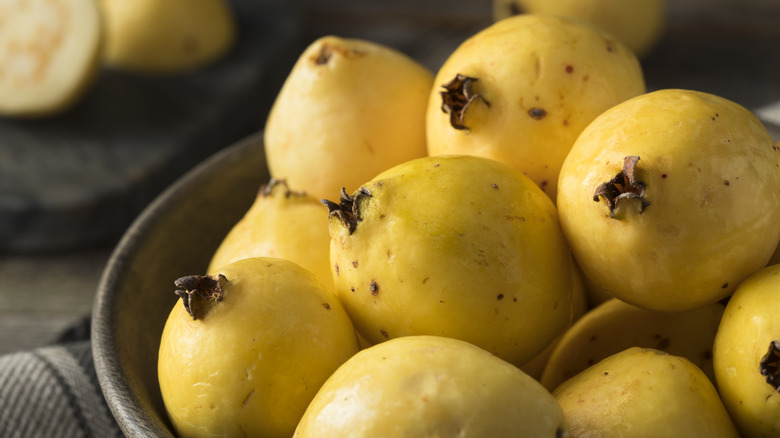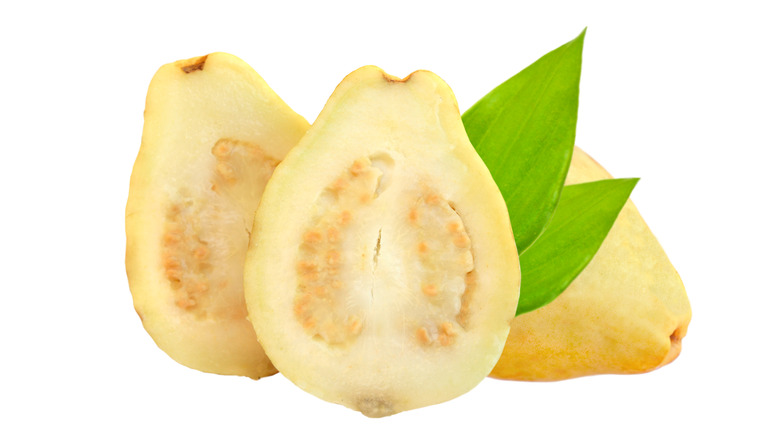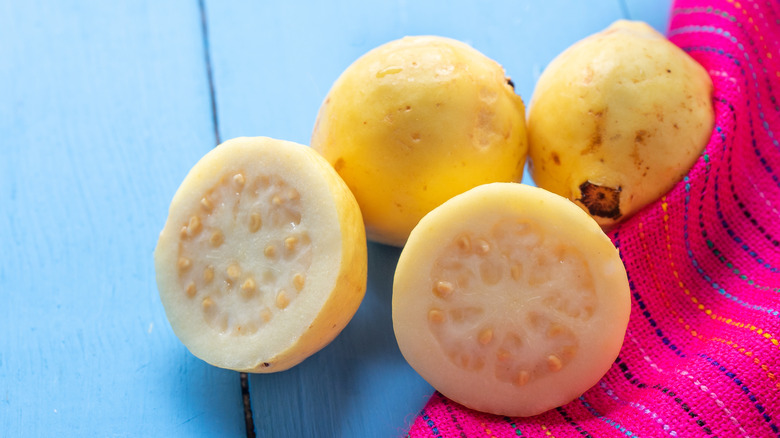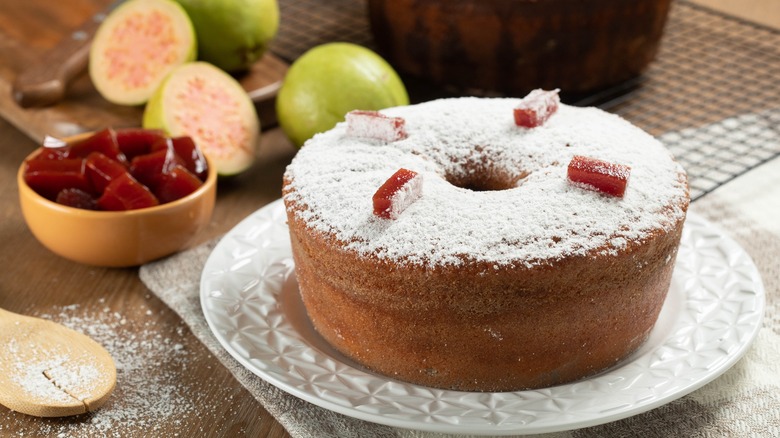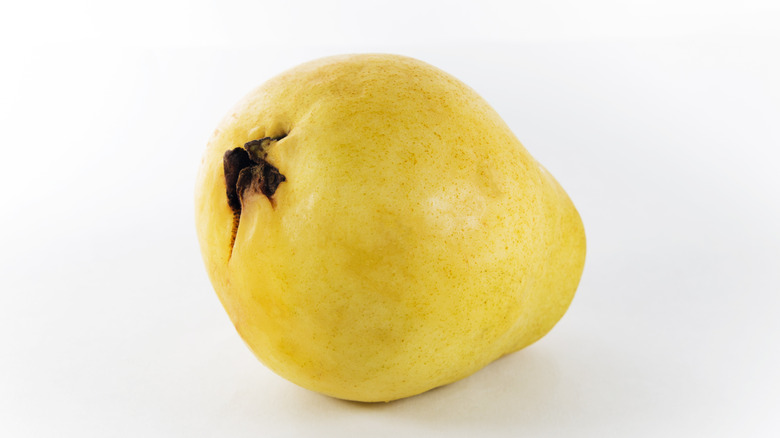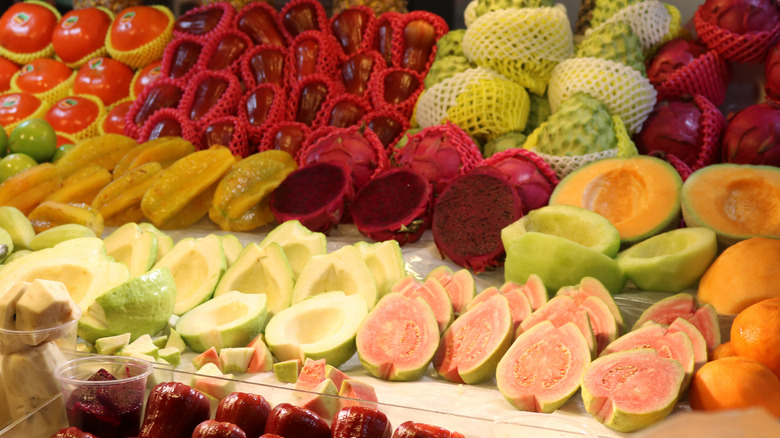What Makes Mexican Cream Guavas Unique?
Tropical fruits come in so many shapes and sizes, there's always a new variety to sample. Take guava, for example. While best known for its pink-fleshed interior, there are over 30 varieties of the fruit. Ranging from yellow to green to even a pineapple-monikered cultivar, each type offers a unique appeal.
Yet out of all the variations, few can match the sweetness of the Mexican Cream guava (Psidium guajava var. 'Mexican Cream'). Known for its delicious taste, this variety stands out when used in juices, preserves, and more. Plus, it's a little easier to find in the U.S., grown in several states as well as in Mexico, as per its name. In the Latin American country, it's interlinked with the Aguascalientes region, specifically the town of Calvillo, where a guava festival is held every December. It's not surprising that this variety of guava is celebrated; it has so much to offer. Let's dive into what sets it apart from the rest.
What are Mexican cream guavas?
The Mexican cream guava, also known as a tropical yellow, is one of several types of guava. Unlike other varieties of the fruit, this cultivar is white on the inside. The exterior skin is a pale yellow, hence the nickname relating it to cream. Additionally, this guava variety has a higher concentration of liquid.
Mexican cream guavas are small, typically only about 2 inches in diameter. Inside the fruit there's a pod with many seeds, which are edible. Guavas grow in large bundles on trees that can reach an impressive height of 30 feet. Such a profusion is explained by the fruit's natural climate: warm and wet tropical conditions. The plant is native to ecosystems in Mexico and Central America but is now also cultivated in the U.S., Southern Asia, some regions in Africa, and other locations worldwide. They've been consumed for many centuries, favored by Amazonian tribes for the nutritional and medicinal qualities of the fruit, leaves, and bark.
What do Mexican cream guavas taste like?
This tropical fruit has a scrumptious taste, accompanied by more sweetness than other guava varieties. Tasting notes include strawberry, as well as pineapple, passion fruit, and papaya. Of course, the guava itself has a distinct tropical flavor of its own, lending to a unique character that's hard to nail down. Texturally, the flesh is soft and creamy, with a mouthfeel reminiscent of a soft pear.
Both the consistency and flavor vary based on the ripeness of the fruit — less mature variants will have a crispier texture, as well as more acidity and less sweetness. Conversely, the longer it gets stored, the sweeter and juicier the guava will become. As well as the flesh of the fruit, the guava rind and the seeds are edible, and eating the fruit whole provides a more nutritious experience. However, many choose to scoop out the seeds and eat only the flesh. It's also easy to enjoy the fruit's flavor in many culinary applications.
How to cook with Mexican cream guavas
Enjoying the fruit on its own is a delicious endeavor, but there's also a range of uses for it in recipes. Many preparations keep it simple; since the fruit is so tasty, it doesn't need added complexity. In Mexico, guavas are frequently prepared into an agua fresca called agua de guayaba. Sold in stalls and dessert shops, the simple recipe comes together with only three ingredients: water, sugar, and guavas. The fruits are cut in half and blended to construct this delicious beverage.
Alternatively, Mexican cream guavas also make for a sweet and tangy compote. A syrup is created with water, sugar, lime, and cinnamon. Cut pieces of guava are stirred into the mixture to simmer, thereby preserving them. In this application, the seeds are removed beforehand to maintain a soft consistency. Mexican cream guavas can also be used as the base for a flavorful cake. As with the compote, it's necessary to remove the seeds and skin before folding pureed guavas into the batter to produce a delicious and light cake.
Nutrition of Mexican cream guavas
In addition to a delectably sweet taste, Mexican cream guavas pack in many nutritious qualities. Foremost, they are loaded with vitamin C, containing more of the nutrient per serving than an orange. In fact, a half-cup serving offers more than 200% of the recommended dietary allowance (RDA), per WebMD. This vitamin is necessary for the production of collagen, which is a core component in skin, as well as other connective tissue throughout the body. The vitamin C found in guavas is also an antioxidant, protecting the body against free radicals, notes Verywell Fit.
Guavas contain potassium and fiber, which ease digestion and have also been shown to aid heart health. One piece of fruit contains 12% of the RDA of fiber. For the best impact on heart health, including the lowering of cholesterol, it's recommended to consume the fruit before a meal, reports Healthline. While less prominent than its other compounds, a half cup of guava also offers a sufficient source of vitamin A. This essential nutrient not only aids against vision loss but also stimulates the production of white blood cells, explains Harvard.
Where to buy Mexican cream guavas
Due to their tropical nature, Mexican cream guavas are available regionally. Like many other tropical fruits, they have a short shelf life, which makes them difficult to transport. As a result, it's much easier to find them in states with their own production, like California, Hawaii, and Florida. Look for the yellow tropical guavas in farmer's markets, stores with expansive fruit selections, or Mexican grocers. It's also possible to purchase the fruit online, but it's usually shipped in bulk. Although the Mexican cream cultivar is one of the tastiest varieties, it's similar enough to be substituted with other guava types in a pinch.
When picking out this fruit, avoid varietals that are hard to the touch — the exterior should softly give way with the press of a finger. Additionally, don't buy yellow guavas with any blemishes or discolorations. No need to worry about seasonality, though; as a tropical fruit, this type of guava is grown year-round.
How to store Mexican cream gauvas
In general, guavas are not ideal fruits for storage; it's best to eat them quickly for optimal flavor. Once purchased, Mexican cream guavas will start to spoil fairly quickly, usually after just a day or two when left out on a counter. Their shelf life can be prolonged to as much as four or five days if they are refrigerated. For the best durability, stash the whole fruit in the crisper section. Cut guava can be refrigerated, too. Just isolate it in its own plastic bag to avoid interactions with other fruits.
Another way to extend the fruit's shelf life is by purchasing guavas that aren't ripe yet. If still firm to the touch, the guavas will become soft and edible within a few days. Alternatively, throw peeled and deseeded guavas into a simple sugar syrup, and then freeze them. The resultant guava syrup will still lend itself to many of the same applications as sliced fruit.
